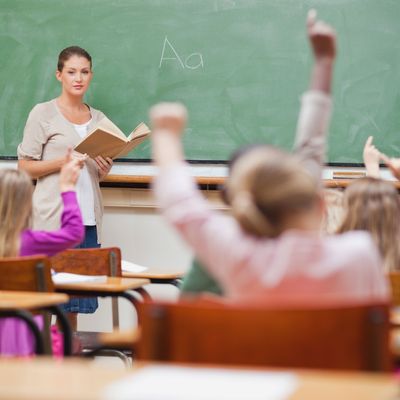
As we collectively struggle to process the senseless violence in Newtown, caregivers have been at the center of the story. The adult victims at Sandy Hook Elementary School, hailed as heroines, were all educators. Dawn Hochsprung, the principal who ran toward gunfire. Vicki Soto, the 27-year-old who saved her first-graders by hiding them in closets and telling the shooter they were at gym class. Mary Sherlach, Lauren Rousseau, Rachel Davino, and Anne Marie Murphy — all of them women who died helping children.
Then there is Lanza’s seventh adult victim, his mother Nancy Lanza, the avid gun collector who taught him how to shoot. There’s also Liza Long, who became a peripheral part of this story when her essay about her own son’s problems with mental illness and violence went viral. The jury is still out on Nancy Lanza and Liza Long, whose plight is of course not comparable to any of the victims but who are heartbreaking and important figures in their own right. They fit the pattern: The most prominent people in this story, other than the shooter himself, are all mothers and teachers.
Sandy Hook has prompted much-needed conversations about gun control and mental-health care. But it should also be inspiring a serious discussion of nurturers. The people who, both paid and unpaid, are raising the next generation. (They’re mostly women, yes — old gender habits die hard — but certainly not exclusively.) There is some truth to the NRA bumper sticker “Guns don’t kill people, people kill people.” And talking about the role of caregivers in our society is a great way to tackle the second half of that slogan.
President Obama gets it. In his memorial speech on Sunday, he made a point of talking about our collective responsibility to nurture. “It comes as a shock at a certain point where you realize no matter how much you love these kids, you can’t do it by yourself,” Obama said, “that this job of keeping our children safe and teaching them well is something we can only do together, with the help of friends and neighbors, the help of a community and the help of a nation.”
We protect the weakest members of our society together. This is how we face tragedies, how we heal ourselves in their wake, and how we prevent them. The problem is bigger and broader than one shooter or one parent. And so the answer isn’t just gun control (although we could use more of it) or mental-health-care mandates (although we could use those, too). It’s that we, as a nation, need to prioritize caregiving.
Let’s face it: Teachers and child-care workers are the people, more than police or EMTs or security guards, who prevent tragedy every day. Sometimes by literally and tragically standing in its way, but mostly by shaping the next generation. They’re the ones tasked with instilling values like nonviolence and acceptance. They’re often the first ones to spot emotional or behavioral problems in children. And when tragedy does strike, they’re not just first responders, they’re also the residual responders. Over the weekend, e-mails from principals and teachers flooded parents’ in-boxes, explaining how schools planned to process the tragedy with young students.
We pay a lot of lip service to the importance of caregiving work. But in the day to day, teaching and child care are not professions associated with much wealth or prestige. We’ve been fighting about what sort of salaries and benefits teachers deserve for years. (The average first-year teacher makes only $39,000, and the average salary after 25 years is a mere $67,000.) We can’t get it together to offer workplace protections to child-care workers, whose financial prospects are even dimmer: The median pay is just $19,300 per year. Perhaps not coincidentally, caregiving and nurturing remain “pink collar” professions. A full 76 percent of public school teachers are women. And we all know that the only reason there are trend pieces about “mannies” is that they’re the exception, not the rule.
“Can we say that we’re truly doing enough to give all the children of this country the chance they deserve to live out their lives in happiness and with purpose?” Obama asked on Sunday. “I’ve been reflecting on this the last few days, and if we’re honest with ourselves, the answer’s no. We’re not doing enough. And we will have to change.”
The Newtown shootings should be a prompt to support and grow the ranks of these caregivers so that both men and women can make ends meet while doing this hugely important work. The idea of putting a high value on nurturing and caregiving is at once deeply conservative and frighteningly radical, something we associate with both “family values” types and hippie communes. Indeed, it shouldn’t be a left or right issue. We can all listen and respond to teachers when they tell us we aren’t paying them enough to make rent. We can respect the rights of child-care workers by ensuring that they have the same employment protections as most working Americans. Caring for and educating children is hard work, and should be compensated accordingly.
Slowly but surely, our old ideas about caregiving are starting to change. Partly owing to economic upheaval and partly owing to evolving attitudes, we’re seeing more men join the ranks of professional nurturers. As teachers and domestic workers make their political presence known on the picket lines, we’re talking more about how much this type of work is worth. Sandy Hook will inevitably fade from the headlines. For those of us who didn’t know them personally, the best way to continue to honor Newtown’s fallen heroines isn’t by signing a gun-control petition. It’s by supporting other educators who do the hard work of caregiving and nurturing the next generation, day in and day out.




